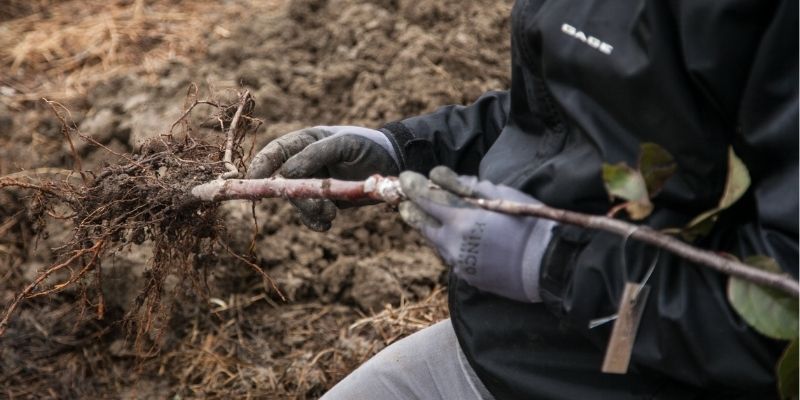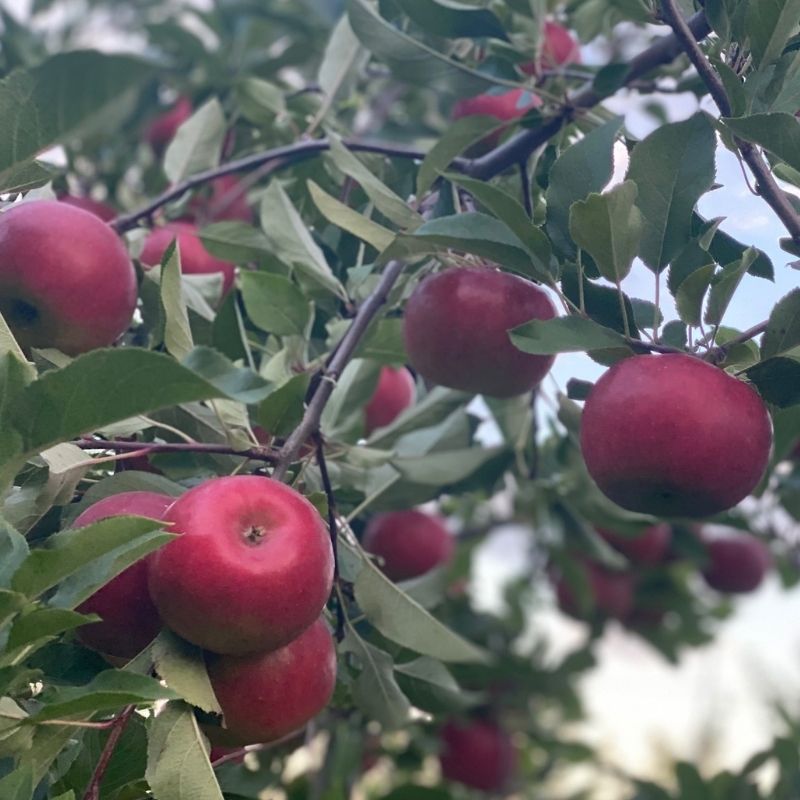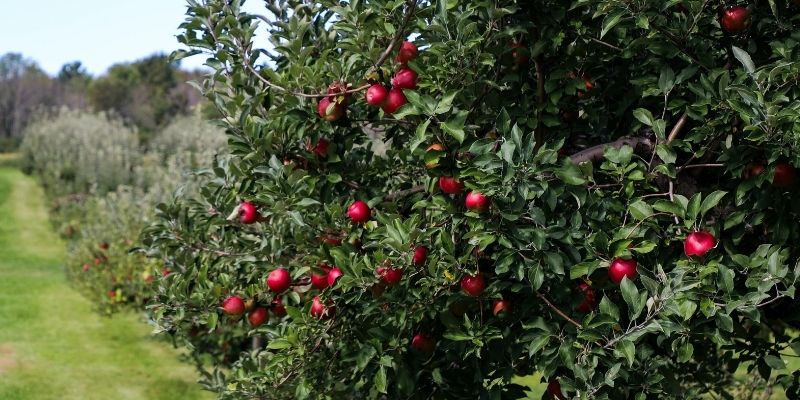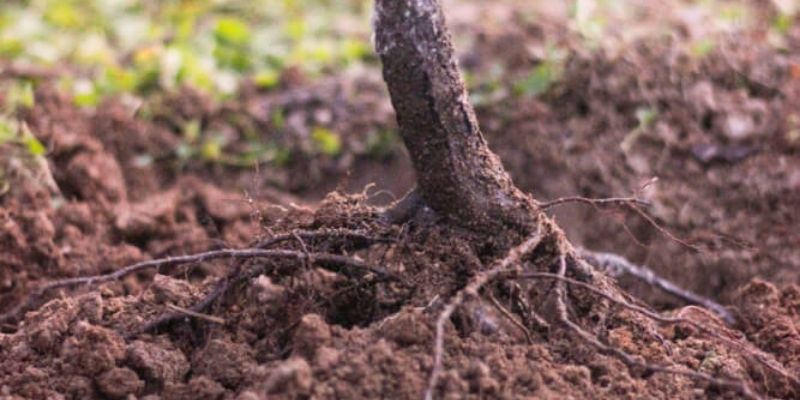Rootstocks & The Anatomy of a Grafted Apple Tree
Apple trees are deceptively simple plants, Friends!
For thousands of years our brilliant indigenous ancestors grafted delicious fruiting ‘scion’ wood onto robust rootstocks with diverse vigor capacities.
The rootstocks we’re sharing are impressively disease resistant as well as semi-dwarfing. Our goal is to provide trees that will require minimal spraying to produce high quality fruit! Orchard pollinators benefit from less spraying too!
Fruition’s Rootstocks
You’ll find our apple trees grafted on Geneva 935 (G935) and Geneva 202 (G202), developed at Cornell for disease resistance, especially to fire blight. Semi-dwarf rootstock indicates that they will grow to be mid-sized trees, growing larger than a fully dwarfing tree, but only becoming half the size of a full-sized apple tree at maturity. Both rootstocks are considered to be approximately 50% the size of a standard apple tree. Their size makes fruit much easier to thin and harvest from the branches.
We love semi-dwarf rootstocks because they take less time to bear the first fruit. Semi-dwarfs usually begin bearing in 2 to 3 years, rather than taking as long as 5 years and often more, as is sometimes the case with standards. Semi-dwarfs are robust and vigorous, yet small enough that they remain easy to maintain and prune over the long term. G935 and G202 are fairly similar except that G935 is slightly more vigorous than G202, and is therefore often used for grafting varieties with a less vigorous nature, and can benefit from the extra boost. The advantage of G202 is that it has resistance to woolly apple aphid, a common pest in some areas. The rootstocks are similar in both size and disease resistance. They will benefit from the support of a strong metal stake, 10 feet in length. This year, most of our varieties are on G935 except Goldrush, which is being offered on G202. These are the perfect size trees for yards that don’t have enough space for a full size apple tree and are favorites among orchardists.
Grafting & Fruiting Wood
Fruiting ‘scion’ wood is grafted onto resilient rootstocks in many different ways, the genius of several millennia of our indigenous ancestors. It’s often easy to find the graft ‘union’ on your apple tree, whether they’re old or young. When they’re young, it’s especially evident, since the trunk has a (sometimes dramatic) crook where the scion wood was inserted. This crook will straighten across the seasons! The outer bark of rootstock and scion are often distinct, as well.

Fruition’s current online tree growing resources are focused on Apple Trees (and it is also true that Pears, Plums, Peaches, Apricots and Cherries require much the same site choice, planting, and basic care considerations!) On that note, we hope you'll enjoy Fruition's free full library of Growing Trees Resources. Also recommended are all books by the late Michael Phillips and the online resources at the New England Tree Fruit Management Guide. In the meantime, enjoy more Fruition tree growing resources:
Apple Tree Growing Guide
Fruit Q&Qs pre-recorded Webinar Library
and join us for future live Fruit Q&Q webinars here!

Be in the know:
Fruition's Fruit Tree Updates!
You'll receive seasonal tree insights & how-to's plus be the first to know about invitations to tree events on-farm and online!
Visit our newsletter website and subscribe to the 'Tree Updates' section
Enjoy our free online Apples & Organic Orcharding course and Tree Webinar Q&Qs Library in the meantime & don't be shy!
~When you join us, check your inbox for your welcome & access info! Stay tuned for our weekly organic gardening tips & inspiration, as well~
Sending love from our gardens to yours!
Sow Seeds & Sing Songs,

& the whole Fruition crew



